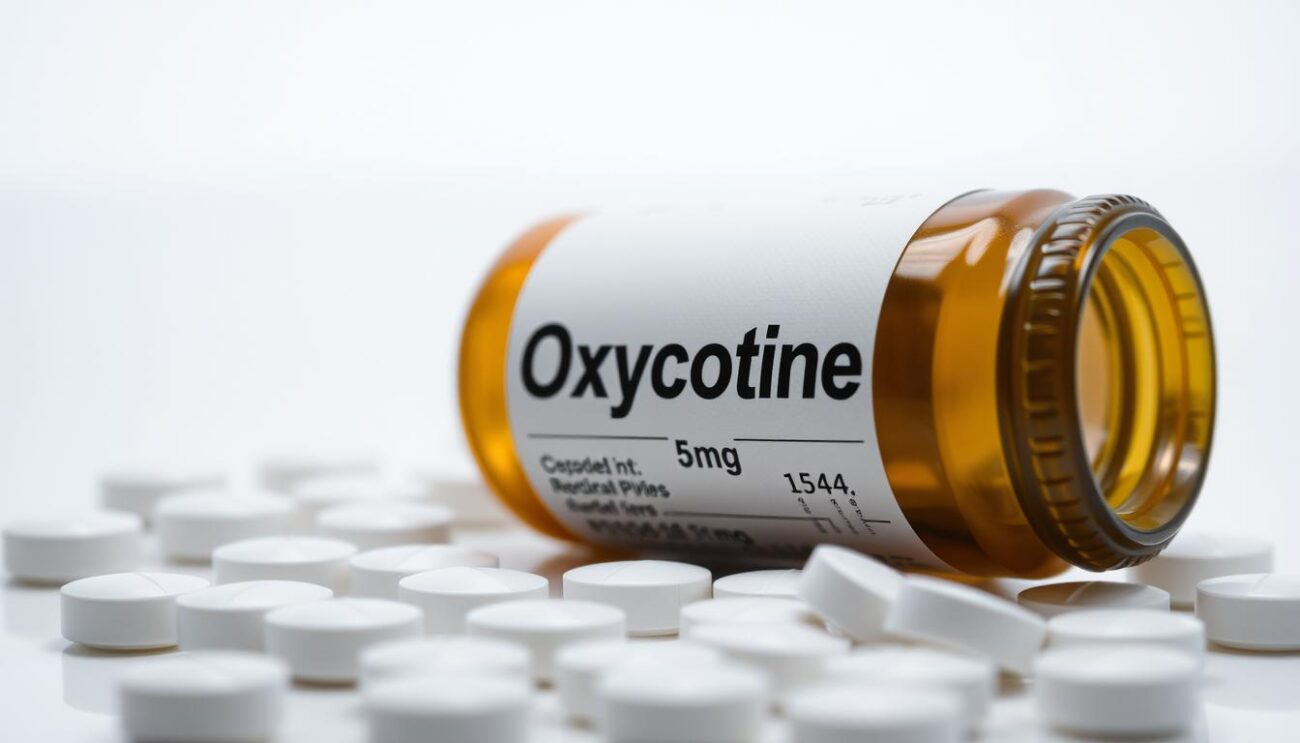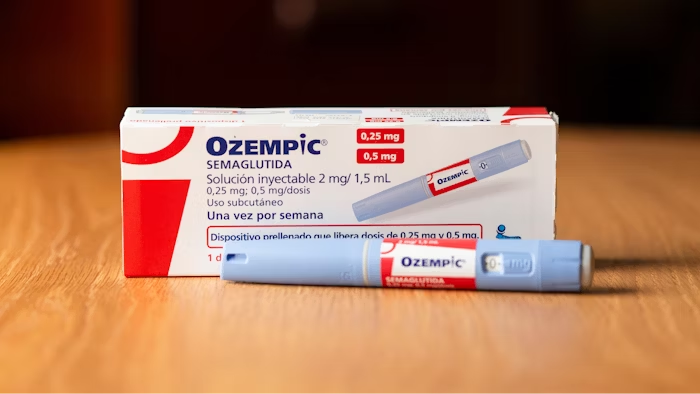Anxiety disorders are among the most common mental health conditions, affecting millions worldwide. In the realm of medication-based treatment, Ativan (lorazepam) and Xanax (alprazolam) are two of the most widely prescribed drugs. Both belong to a class of medications known as benzodiazepines, which are known for their calming effect on the brain and nerves (central nervous system). This article aims to provide an in-depth comparison of Ativan and Xanax, exploring their similarities, differences, and how they are used in the management of anxiety disorders.
But which of these two medications is better suited for your specific needs? Can they be safely used interchangeably, or are there important distinctions to consider? Let’s delve into the details and uncover the answers to these pressing questions.
Key Takeaways
- Ativan (lorazepam) and Xanax (alprazolam) are both benzodiazepine medications used to treat anxiety disorders.
- Ativan may cause drowsiness in 15.9% of people, while Xanax may cause drowsiness in 41% of people using it for anxiety.
- Xanax has a quicker onset of action, typically within 15-30 minutes, making it effective for acute anxiety or panic attacks.
- Ativan takes slightly longer to take effect, usually 20-30 minutes, but its effects last longer, making it suitable for sustained anxiety relief.
- Both Ativan and Xanax carry risks of physical dependence and withdrawal symptoms, including insomnia, irritability, and seizures.
The Basics: Understanding Ativan and Xanax
What is Ativan?
Ativan, the brand name for the benzodiazepine drug lorazepam, is commonly prescribed for the short-term treatment of anxiety symptoms, insomnia, and as a premedication for anesthesia. It has a relatively quick onset of action and can also be used in managing seizure disorders.
What is Xanax?
Xanax, the brand name for the benzodiazepine drug alprazolam, is particularly effective in treating panic disorder and generalized anxiety disorder. It is known for its rapid relief of symptoms, but this also means it can be more addictive and has a higher potential for abuse.
Both Ativan and Xanax belong to the class of benzodiazepine medications, which work by enhancing the effects of the neurotransmitter GABA in the brain, leading to a calming and sedative effect. However, these two medications have distinct characteristics and are often prescribed for different anxiety-related conditions.
| Characteristic | Ativan (Lorazepam) | Xanax (Alprazolam) |
|---|---|---|
| Primary Uses | Anxiety, insomnia, seizure disorders | Panic disorder, generalized anxiety disorder |
| Onset of Action | Relatively quick | Rapid |
| Potential for Abuse | Lower | Higher |
Understanding the unique properties of Ativan and Xanax is crucial when considering the appropriate treatment for various anxiety-related conditions.
Chemical Composition: Similarities and Differences
Ativan (lorazepam) and Xanax (alprazolam) are both benzodiazepines, a class of medications used to treat anxiety, panic disorders, and seizures. While these two drugs share similarities in their overall purpose, their chemical compositions and individual characteristics do differ.
Ativan has a half-life of about 12 to 18 hours, while Xanax has a half-life of 11.2 hours, indicating a longer duration of action for Ativan. Ativan works faster when injected, providing relief within one to three minutes when injected into a vein, making it suitable for specific medical situations like treating seizures.
| Characteristic | Ativan | Xanax |
|---|---|---|
| Half-life | 12-18 hours | 11.2 hours |
| Onset of action | 1-3 minutes (when injected) | 30 minutes |
| Formulations | Oral, injectable | Oral (immediate-release and extended-release) |
| Typical dosage | 2-3 mg per day | 0.25-0.5 mg per day |
| Suitable for | Anxiety, insomnia, seizures | Acute anxiety, panic attacks |
Ativan is considered safer than Xanax due to its lower risk of rebound anxiety or withdrawal symptoms.
Both Ativan and Xanax belong to the benzodiazepine class of medications, which are known for their addictive potential. Prolonged use of these drugs can lead to physical dependence and the development of withdrawal symptoms. It’s important to use these medications under medical supervision and follow dosage guidelines to minimize the risks associated with long-term use.
Effective Uses: Ativan vs Xanax
Ativan’s Applications
Ativan, known generically as lorazepam, is a versatile benzodiazepine medication commonly prescribed for the management of generalized anxiety disorder and insomnia. Its slightly longer duration of action compared to Xanax makes it a preferred choice for those seeking a more prolonged relief from anxiety symptoms. Ativan is also utilized in the treatment of seizure disorders and as a preoperative sedative to help patients relax before surgical procedures.
Xanax’s Applications
Xanax, the brand name for alprazolam, is particularly effective in the treatment of panic disorder. Its rapid onset of action allows it to provide quick relief from the sudden, intense feelings of fear and anxiety associated with panic attacks. Xanax is also prescribed for the management of generalized anxiety disorder, offering relief from the persistent, excessive worries that characterize this condition.
| Medication | Primary Uses | Onset of Action |
|---|---|---|
| Ativan (lorazepam) | Generalized anxiety disorder, insomnia, seizure disorders, preoperative sedation | Slower, with effects peaking within 2-6 hours |
| Xanax (alprazolam) | Panic disorder, generalized anxiety disorder | Faster, with effects peaking within 1-2 hours |
While both Ativan and Xanax are effective in treating anxiety disorders, their specific applications and onset of action differ, making them suitable for different clinical scenarios. Healthcare providers carefully consider these factors when prescribing either medication to ensure the best possible outcome for their patients.
ativan vs xanax: Onset, Duration, and Potency
When it comes to anxiety management, the choice between Ativan (lorazepam) and Xanax (alprazolam) often boils down to the specific needs of the individual. Both medications belong to the benzodiazepine class of drugs, but they differ in their onset of action, duration of effects, and potency.
Xanax is known for its rapid onset of action, often providing relief within minutes, making it a preferred option for sudden and intense panic attacks. In contrast, Ativan may take a bit longer to kick in, but it offers longer-lasting calming effects, making it suitable for situations where sustained relief is needed, such as generalized anxiety disorder and insomnia.
When it comes to duration, Ativan’s effects can last up to 8 hours, while Xanax’s effects generally last around 4 to 6 hours. This difference in duration can be a crucial factor in determining which medication is more appropriate for a patient’s needs.
Regarding potency, Xanax is generally considered more potent than Ativan, with a higher potential for addiction and withdrawal symptoms. Ativan’s daily dose ranges from 0.5 to 2 milligrams (mg), while Xanax dose ranges from 0.25 to 4 mg, further highlighting the differences in their strength and potential for dependence.
The choice between Ativan and Xanax should be made in consultation with healthcare professionals, taking into account the individual’s symptoms, urgency of relief, and duration of effects needed. Both medications have the potential for habit-forming or dependence if misused or used for prolonged periods, emphasizing the importance of following healthcare provider guidelines for dosage and administration.
“The effects of extended-release Xanax can last up to 11 hours, but there is no extended-release equivalent for Ativan.”
Side Effects and Safety Profiles
Both Ativan (lorazepam) and Xanax (alprazolam) are benzodiazepines, a class of drugs commonly used to treat anxiety, insomnia, and other conditions. While these medications can be effective, it’s important to be aware of their potential side effects.
Potential Side Effects of Ativan
The most frequently reported side effects of Ativan include drowsiness, dizziness, fatigue, and blurred vision. These effects can impair daily activities, such as driving or operating machinery. Additionally, Ativan may cause weakness, instability, and memory issues in some individuals.
Potential Side Effects of Xanax
Similar to Ativan, Xanax can also cause drowsiness, dizziness, fatigue, and blurred vision. However, Xanax may lead to more pronounced mood changes, coordination issues, and in some cases, depression.
It’s important to discuss these potential side effects with a healthcare provider and to closely monitor for any adverse reactions, especially when starting or adjusting the dosage of these medications.

“Benzodiazepines such as alprazolam, clobazam, chlordiazepoxide, and others account for 1% to 2% of United States emergency department visits annually.”
Careful management and close follow-up with a healthcare provider are essential when using Ativan, Xanax, or other benzodiazepines to ensure optimal safety and efficacy.
Ritalin (methylphenidate) is a commonlyprescribed medication for ADHD and narcolepsy, with its own set of potential side effects to consider
Dosage Guidelines and Administration
When it comes to Ativan (lorazepam) and Xanax (alprazolam), the dosage guidelines and administration can vary significantly based on individual needs, the specific condition being treated, and the patient’s response to the medication. Understanding the proper dosing and administration of these anxiety medications is crucial for ensuring their effectiveness and reducing the risk of potential side effects.
Ativan Dosage
The typical starting dosage for Ativan is relatively lower, often ranging from 0.5mg to 2mg, and it is typically administered two to three times a day. The dosage may be adjusted based on the individual’s age, health conditions, symptom severity, and treatment duration. Ativan’s longer duration of action, around 8 hours, is an important factor in the dosing strategy.
Xanax Dosage
Xanax, on the other hand, may have a different dosing approach due to its increased potency and quicker onset of action. The starting dosage for Xanax is typically 0.25mg to 0.5mg, and it is usually taken three times a day. Similar to Ativan, the Xanax dosage can be adjusted based on the patient’s age, health conditions, symptom severity, and treatment duration.
Proper medication administration is vital for both Ativan and Xanax. Patients should follow the healthcare provider’s instructions carefully, as taking these medications incorrectly or without medical supervision can increase the risk of adverse effects and dependence.
| Medication | Typical Starting Dosage | Dosing Frequency | Dosage Adjustments |
|---|---|---|---|
| Ativan (lorazepam) | 0.5mg to 2mg | 2-3 times daily | Based on age, health conditions, symptom severity, and treatment duration |
| Xanax (alprazolam) | 0.25mg to 0.5mg | 3 times daily | Based on age, health conditions, symptom severity, and treatment duration |
Ultimately, the ativan dosage and xanax dosage guidelines should be tailored to the individual patient’s needs and closely monitored by their healthcare provider to ensure the most effective and safe medication administration.
Dependence Risks and Withdrawal Symptoms
While Ativan and Xanax are effective for managing anxiety and insomnia, both medications carry a risk of physical and psychological dependence. Prolonged use can lead to tolerance, where higher doses are needed to achieve the same effect. This can escalate into a dangerous cycle of dependence.
Ativan Withdrawal
Discontinuing Ativan, a short-acting benzodiazepine, can result in withdrawal symptoms such as anxiety, insomnia, irritability, and in severe cases, seizures. The risk of dependence is higher with Ativan due to its quicker onset and shorter duration of action.
Xanax Withdrawal
Xanax, a longer-acting benzodiazepine, may have an even higher potential for abuse and dependence, especially in those with a history of substance abuse. Withdrawal symptoms from Xanax can be more intense, including increased heart rate, sweating, tremors, and in extreme cases, convulsions. This is due to Xanax’s shorter half-life compared to Ativan.
Regardless of the specific medication, benzodiazepine addiction can lead to severe health consequences, including organ damage and even death. Seeking professional help for ativan dependence, ativan withdrawal, xanax dependence, or xanax withdrawal is crucial to manage the risks and ensure a safe recovery.
| Withdrawal Symptom | Ativan | Xanax |
|---|---|---|
| Anxiety | ✓ | |
| Insomnia | ✓ | |
| Irritability | ✓ | |
| Seizures | ✓ | ✓ |
| Increased Heart Rate | ✓ | |
| Sweating | ✓ | |
| Tremors | ✓ | |
| Convulsions | ✓ |
Both Ativan and Xanax, being benzodiazepines, can lead to physical and psychological tolerance, anxiety, insomnia, irritability, seizures, and other withdrawal symptoms upon discontinuation. Seeking professional help is crucial to manage the risks and ensure a safe recovery.
Drug Interactions: What to Watch For
When it comes to Ativan and Xanax, healthcare providers must be diligent about potential drug interactions. Both of these benzodiazepines can interact with other central nervous system (CNS) depressants, such as alcohol, barbiturates, and opioids. These combinations can lead to severe drowsiness, respiratory depression, coma, and even death.
Patients should always inform their doctors about all the medications they are currently taking, including over-the-counter drugs, supplements, and herbal remedies. This information is crucial, as certain interactions can significantly increase the risk of adverse effects. For instance, Xanax should not be taken with certain antifungal medicines, as this can result in dangerously high drug levels.
To minimize the risks, healthcare providers often recommend gradually increasing the dosage of Ativan to avoid adverse effects. With Xanax, it’s essential to take the medication as prescribed, as abrupt changes in dosage can lead to severe drowsiness or respiratory depression. Regardless of the specific benzodiazepine, patients should always avoid combining these drugs with alcohol and other sedatives, as the combined effects can be life-threatening.
| Drug Interaction | Potential Risks |
|---|---|
| Alcohol | Increased sedation, respiratory depression, coma, and death |
| Barbiturates | Increased sedation, respiratory depression, coma, and death |
| Opioids | Increased sedation, respiratory depression, coma, and death |
| Certain Antifungal Medicines (Xanax) | Dangerously high levels of Xanax in the body |
By understanding the potential drug interactions associated with Ativan and Xanax, healthcare providers and patients can work together to mitigate the risks and ensure the safe and effective use of these anxiety medications.
Cost and Insurance Coverage
When it comes to the cost of Ativan versus Xanax, the prices can vary depending on several factors, including your location, pharmacy, and insurance coverage. According to GoodRx, a 30-tablet supply of generic Ativan 1 mg typically costs around $5.66, while a 30-tablet supply of generic Xanax 0.5 mg is approximately $4.05. The extended-release version of Xanax 1 mg costs approximately $16.81 for 30 tablets.
The final cost you’ll pay for these anxiety medications will ultimately depend on your individual insurance coverage. Most Medicare and insurance plans cover generic versions of Ativan and Xanax, but the specifics of your plan will determine the exact out-of-pocket expenses you’ll incur.
| Medication | Typical Cost (30-tablet supply) |
|---|---|
| Generic Ativan 1 mg | $5.66 |
| Generic Xanax 0.5 mg | $4.05 |
| Extended-release Xanax 1 mg | $16.81 |
It’s important to note that the cost of ativan and xanax can vary widely depending on your specific insurance coverage and the pharmacy you use. Checking with your insurance provider and comparing prices at different pharmacies can help you find the most affordable option for your needs.
“The final cost will depend on the individual’s insurance coverage.”
Conclusion
In the comparison between Ativan and Xanax, both medications have proven to be effective benzodiazepine treatments for anxiety disorders. While they share similarities in their mechanism of action, there are notable differences in their onset, duration, potency, and specific indications.
Healthcare providers must carefully consider these factors, as well as the individual patient’s needs and medical history, when determining the most appropriate medication for anxiety management. Ativan’s longer duration of action may be beneficial for chronic anxiety, while Xanax’s rapid onset can provide quick relief for acute anxiety symptoms.
It is crucial for patients to work closely with their healthcare providers to understand the potential benefits, risks, and appropriate use of these anxiety treatment options. Responsible medication management is essential, as both Ativan and Xanax have a risk of dependence and withdrawal symptoms if not used as prescribed. By weighing the unique characteristics of these benzodiazepines, clinicians can make informed decisions to provide the most effective medication comparison and anxiety treatment for their patients.







